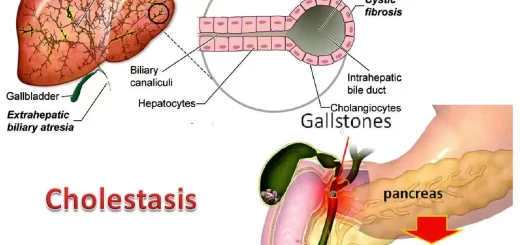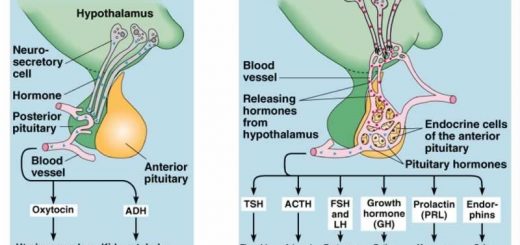Anatomy of the circulatory system, Vascular system, Arteries of head and neck
The circulatory system consists of blood vessels that carry blood away from and towards the heart, Arteries carry blood away from the heart and veins carry blood back to the heart, Circulatory system carries oxygen, nutrients, and hormones to cells, and removes waste products, like carbon dioxide.
Circulatory system
The circulatory system of the blood includes systemic circulation and pulmonary circulation. Circulatory system is known as the cardiovascular system or the vascular system, It allows blood to transport nutrients, oxygen, carbon dioxide, hormones, and blood cells to and from the cells in the body, It helps in fighting diseases, It stabilizes the temperature, and pH, and maintains homeostasis.
Arteries of head and neck
1- Subclavian Artery
Origin: On the left side: Form the arch of the aorta behind the centre of the manubrium (It enters the neck behind the left sterno-clavicular joint). On the right side: It is one of the two terminal branches of the innominate artery (It enters the neck behind the right sterno-clavicular joint).
Course: The scalenus anterior divides its course into three parts:
- First part: Medial to scalenus anterior.
- Second part: Behind scalenus anterior.
- Third part: Lateral to scalenus anterior.
Termination: At the outer border of the first rib where it continues as the axillary artery.
Branches:
- First part: Vertebral artery, Thyrocervical trunk, and Internal mammary artery.
- Second part: Costocervical trunk.
- Third part: Dorsal scapular artery
Branches:
I. First part:
- Vertebral artery (divided into 4 parts).
- The thyrocervical trunk which gives, Inferior thyroid artery, Suprascapular artery, and Transverse cervical artery
- Internal mammary artery
II. Second part: Costocervical trunk which gives Superior intercostal artery and Deep cervical artery
III. Third part: Dorsal scapular artery (to the posterior triangle).
2. Common carotid artery
Origin: The right common carotid artery is a branch of the brachiocephalic artery while the left common carotid arises from the arch of the aorta.
End: The common carotid artery ascends within the carotid sheath and opposite the disc between the 3rd and 4th cervical vertebrae it ends by giving two terminal branches: external and internal carotid arteries. Surface anatomy is represented by a line extending from the sternoclavicular joint to the upper border of the thyroid cartilage.
3. External carotid artery
Beginning: Begins at the level of the superior border of the thyroid cartilage (disc between C3 and C4 vertebrae).
End: Opposite the neck of the mandible by dividing into:
- Superficial temporal artery.
- Maxillary artery supplying the teeth, muscles of mastication and gives a middle meningeal branch to supply the meninges.
Branches of the external carotid artery:
- Superior thyroid artery.
- Ascending pharyngeal artery.
- Lingual artery.
- Facial artery.
- Occipital artery.
- Posterior auricular artery.
Surface anatomy is represented by a line extending from the upper border of the thyroid cartilage to the neck of the mandible.
4. Internal carotid artery
Beginning: It begins as one of the two terminal branches of the common carotid artery, opposite to the upper border of the thyroid cartilage.
Course: It is subdivided into four parts which are:
- Cervical part: In the carotid sheath.
- Intrapetrous part: In the carotid canal inside the petrous part of the temporal bone.
- Intracavernous part: Inside the cavernous sinus.
- Intracranial part: Inside the cranial cavity.
Course of the cervical part:
- It ascends vertically in the neck (inside the carotid sheath) until it enters the carotid canal in the base of the skull then runs up in the carotid canal.
- Then it changes its direction to run forwards and medially to reach the foramen lacerum.
- It curves up to enter the floor of the cavernous sinus.
- It reaches the brain where it terminates by dividing into:
- Anterior cerebral artery
- Middle cerebral artery
Veins of head and neck
There are two types of veins:
I. Superficial veins
- Drain the superficial part of the face and the scalp.
- These veins unite to form an external jugular vein, which descends in the neck to drain into the subclavian vein.
External jugular vein:
Begins: by the union of the posterior auricular and posterior division of retromandibular (posteri or facial) veins.
Course:
- Runs superficial to the sternomastoid muscle.
- Three cm above the midclavicular point, it pierces the deep fascia, to drain into the subclavian vein.
Tributaries:
- Anterior jugular vein.
- Transverse cervical vein.
- Superficial cervical vein.
- Suprascapular vein.
II. Deep veins
Internal jugular vein:
- Beginning: Begins as a continuation of sigmoid venous sinus, at the jugular foramen in the base of the skull.
- Course: It descends lateral to internal and common carotid arteries in the carotid sheath.
- Ends: Terminates by joining the subclavian vein behind the clavicle to form the brachiocephalic vein.
Tributaries:
- Inferior petrosal venous sinus.
- Common facial vein.
- Lingual vein.
- Superior & middle thyroid veins.
- Pharyngeal vein.
Development of the vascular system
- Two dorsal aortae are present dorsal and another two are present ventral to the embryo.
- The two ventral aortae fuse forming a single sac, called the aortic sac.
- Six aortic arches appear in a successive manner, in a craniocaudal direction.
- These arches connect the aortic sac ventrally, to the dorsal aortae dorsally.
- Distal to the origin of the 6th arch, the two dorsal aortae fuse forming one dorsal aorta.
Fate and derivatives of the aortic arches
The first arch: It disappeared, except a part forming the maxillary artery.
The second arch: It disappeared, except a part forming the stapedial artery of the ear.
The third arch (carotid arch): It gives a bud to form the external carotid artery. The proximal segment (the segment near the aortic sac) of the third arch will form the common carotid artery.
The internal carotid artery is formed from:
- The distal segment of the third arch.
- Part of the dorsal aorta cranial to the third arch.
The fourth arch: On the left side, it gives the arch of the aorta. On the right, it gives a part of the right subclavian artery. The seventh intersegmental arteries (right and left) migrate to the level of the fourth arch. These arteries will give all the subclavian artery on the left, and a part of the subclavian artery on the right.
The right subclavian artery is formed from:
- Right fourth aortic arch.
- Right seventh intersegmental artery.
- Part of the dorsal aorta that lies between the right fourth aortic arch and right seventh intersegmental artery.
The fifth arch: It degenerates completely on both sides.
Relation of the recurrent laryngeal nerve
- Double aortic arch.
- Right-sided aortic arch.
- Retropharyngeal subclavian artery.
- Patent ductus arteriosus.
- Transposition of the great vessels, this means that the aorta arises from the right ventricle, and the pulmonary trunk arises from the left ventricle.
- Coarctation of the aorta: it means narrowing of the arch of the aorta. This narrowing occurred after the arch gives off the left subclavian artery. It is represented clinically by an equal pulse in the upper and lower limbs.
Cardiovascular system, Blood pressure regulation, Heart rate & its regulation
Heart & Pericardium structure, Abnormalities & Development of the heart
Cardiac cycle importance, phases, diastole & systole, Aortic pulse curve & jugular venous
Heart function, structure, Valves, Borders, Chambers & Surfaces
Blood vessels structure, function, layers, characteristics & How blood vessels work



